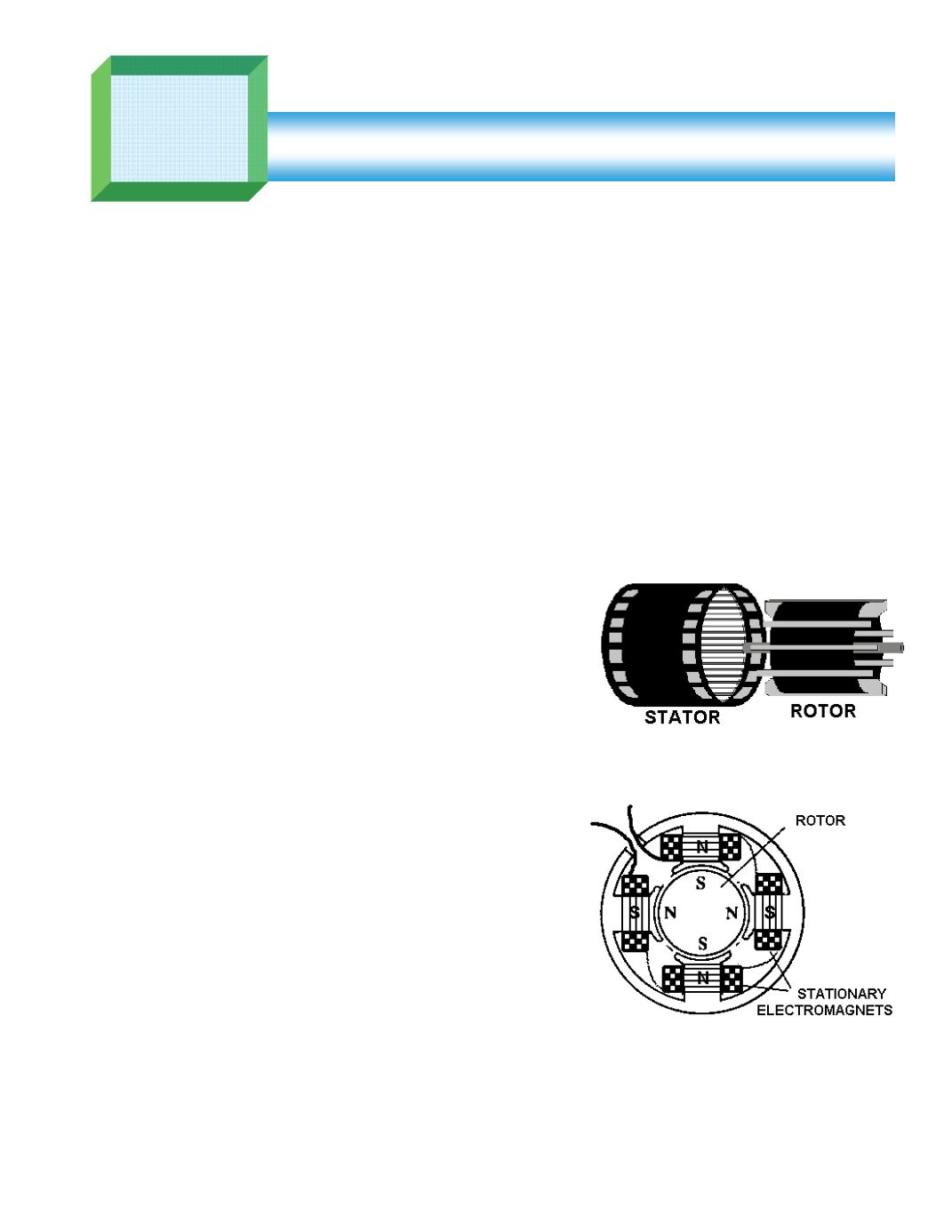

Electrical Theory & Applications for HVACR
Chapter 3: Motors
Page 55
Motors
3
Motors are components of circuits, however, this book treats them as a separate secƟon.
INDUCTION MOTORS
Over 90 percent of all motors are inducƟon motors and operate on alternaƟng current. (DC motors
are not discussed in this book.) Knowledge of inducƟon motors can easily be applied to other motor
types. A constantly malfuncƟoning motor is a warning that there may be other system problems like
improper voltage, faulty capacitor, dirt, moisture, or overloaded condiƟons. A good working
knowledge of motors and their operaƟon is necessary to properly troubleshoot HVACR systems and
perform required repairs.
THE PARTS OF A MOTOR
There are three main parts of any motor: the rotor, the stator, and the endbells/bearings. The rotor
is located inside the stator. Endbells with bearings are used on each end of the motor and the enƟre
assembly is bolted together.
InducƟon motors operate on the principle of induced
magneƟsm. The stator is a circular staƟonary
electromagnet, and the rotor is located inside it. When
current flows through the stator coils, a strong magneƟc
field is produced in the stator poles. This stator magneƟsm
induces opposite magneƟsm in the rotor, causing it to
rotate.
STATOR POLES
Two or more staƟonary electromagnets called poles are
posiƟoned at opposite sides of a circle inside the motor. A
strong magneƟc field is produced when current flows
through the coils. In a two‐pole motor, the stator poles have
opposite polarity; one coil produces a north pole and the
other a south pole.
An electromagnet has two disƟnct advantages: its core is
magneƟzed only when current flows through the coil, and its
polarity can be changed by reversing this current flow.
AlternaƟng current automaƟcally reverses polarity of the
stator poles at a rate of 120 Ɵmes per second (one posiƟve
and one negaƟve per cycle). When alternaƟng current
Fig. 3‐1: The two main parts of a motor
Fig. 3‐2: Rotor magneƟsm is aƩracted and
repelled by rotaƟng stator pole










